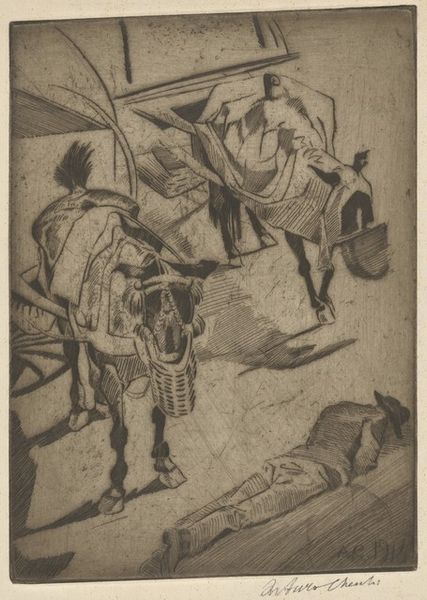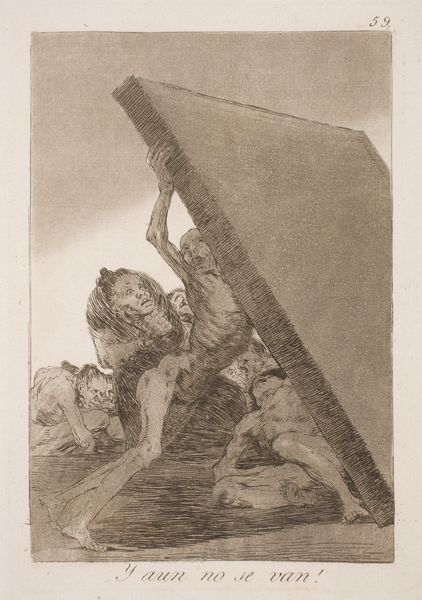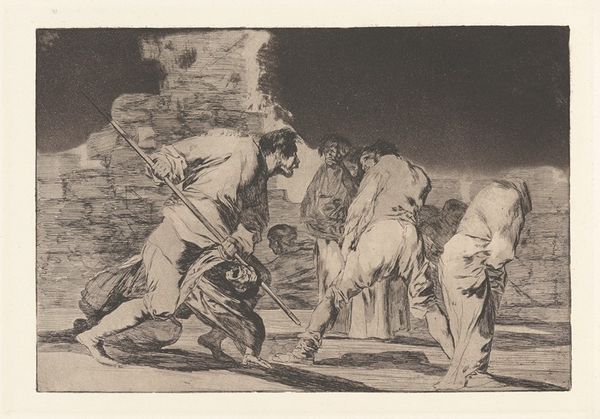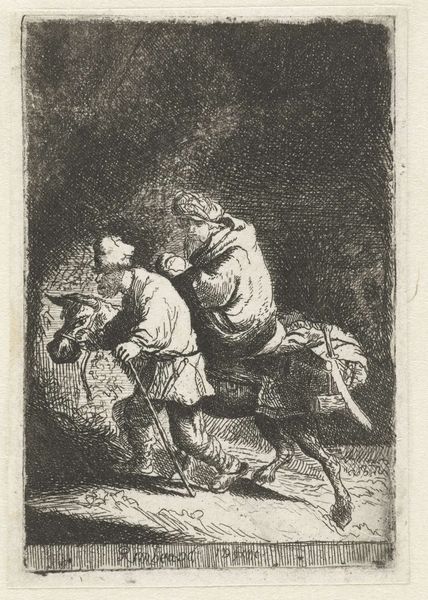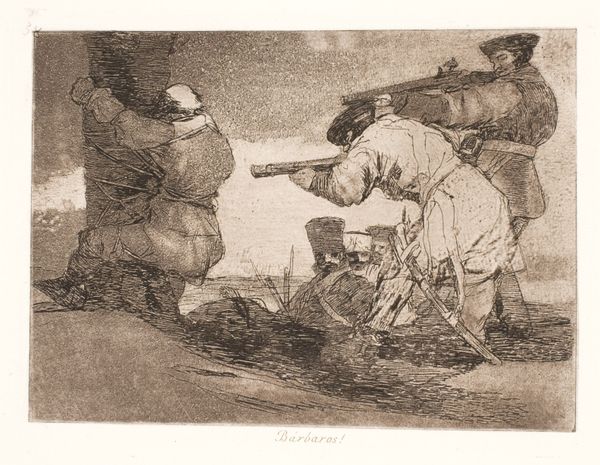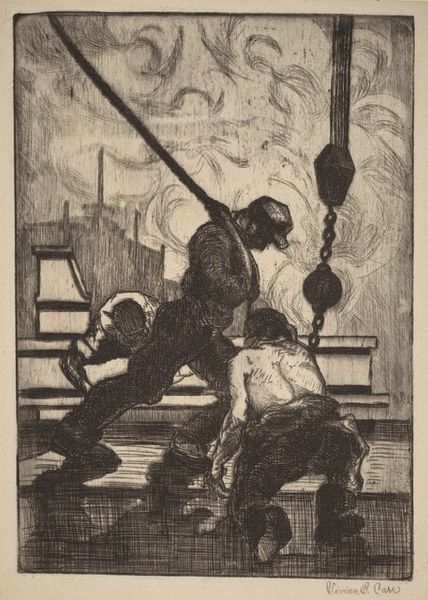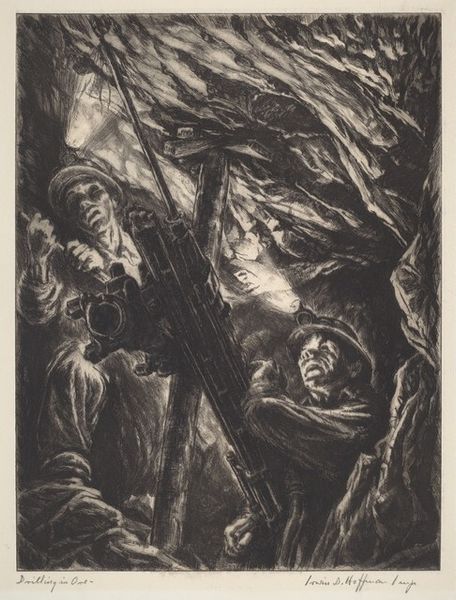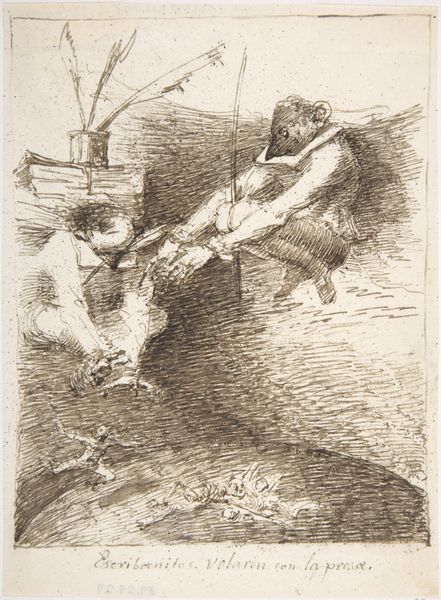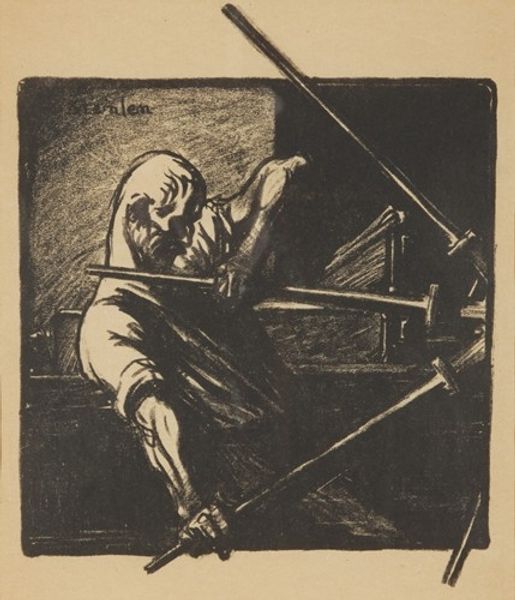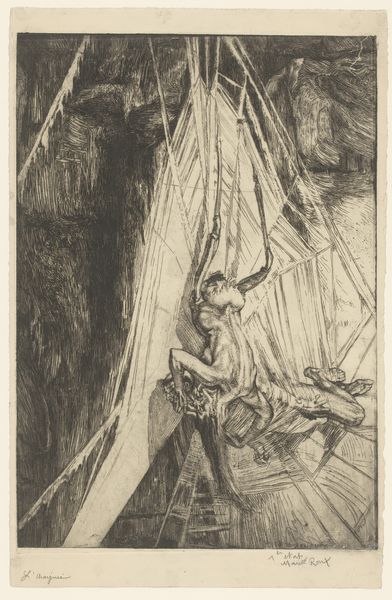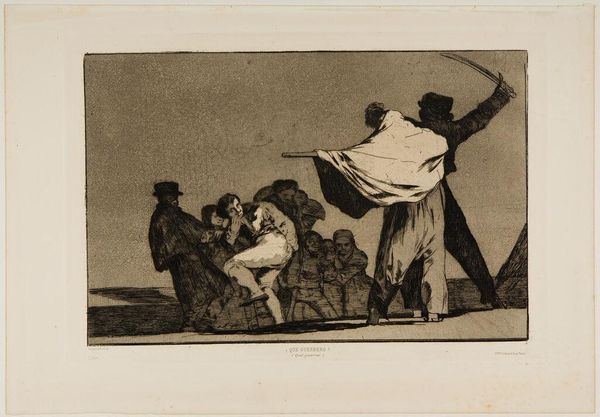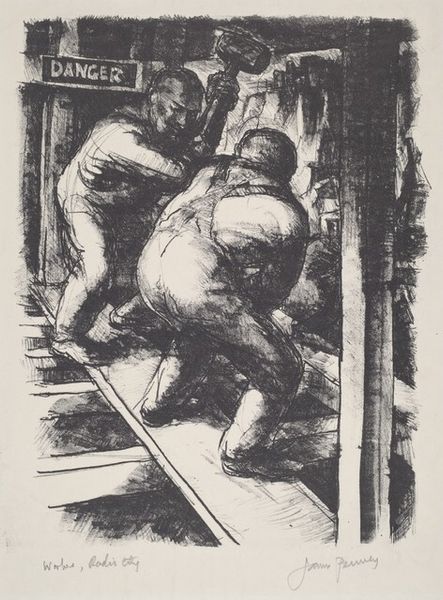
drawing, print, etching
#
pencil drawn
#
drawing
# print
#
etching
#
pencil sketch
#
landscape
#
charcoal drawing
#
figuration
#
pencil drawing
#
genre-painting
#
history-painting
#
realism
Dimensions: plate: 30.1 × 25 cm (11 7/8 × 9 13/16 in.) sheet: 38.5 × 32.5 cm (15 3/16 × 12 13/16 in.)
Copyright: National Gallery of Art: CC0 1.0
Curator: James E. Allen created this etching, "Coal Heavers," around 1935. Editor: My first thought is heat—it seems like a visual representation of oppressive heat and strenuous labor. Curator: The period Allen was working in saw a surge in art depicting industrial subjects, celebrating and also scrutinizing labor's role in society. How do you think this piece engages with that dialogue? Editor: It’s interesting. These figures are nearly monumental in their intensity. But unlike some social realist art that romanticized labor, there's a starkness here, a grit that feels more authentic to the back-breaking reality. The lack of distinct facial features almost renders them everyman symbols, stripped of individual identities. It emphasizes the universal experience of these laborers in a capitalistic society that disregards the lower working class, wouldn’t you agree? Curator: Indeed. The artist really draws our attention to this. And this kind of treatment of labor, even in art, often reveals a complex tension: appreciation coupled with a safe distance. Think about the role that these kinds of artworks have served in shaping public perception about the labor class and the effects that had, especially when it comes to political or legislative efforts. Editor: And it's the contrast between the muscular physiques and their almost ghost-like rendering, made by those repetitive linear etchings, that gets me. The men are physically present and immensely strong, yet socially invisible. What purpose is fulfilled through that visual statement? Curator: A very potent one. And given its existence as a print, it suggests this wasn't necessarily created for a wealthy collector, but rather for broader circulation, perhaps with the explicit aim of inciting social commentary. Editor: It seems Allen aimed to use their powerful forms and physical struggle to represent all those left unseen. It’s as relevant now as it was then, really. Curator: Precisely. Allen created something of enduring commentary through these few lines and shadows, asking viewers to confront uncomfortable truths.
Comments
No comments
Be the first to comment and join the conversation on the ultimate creative platform.
